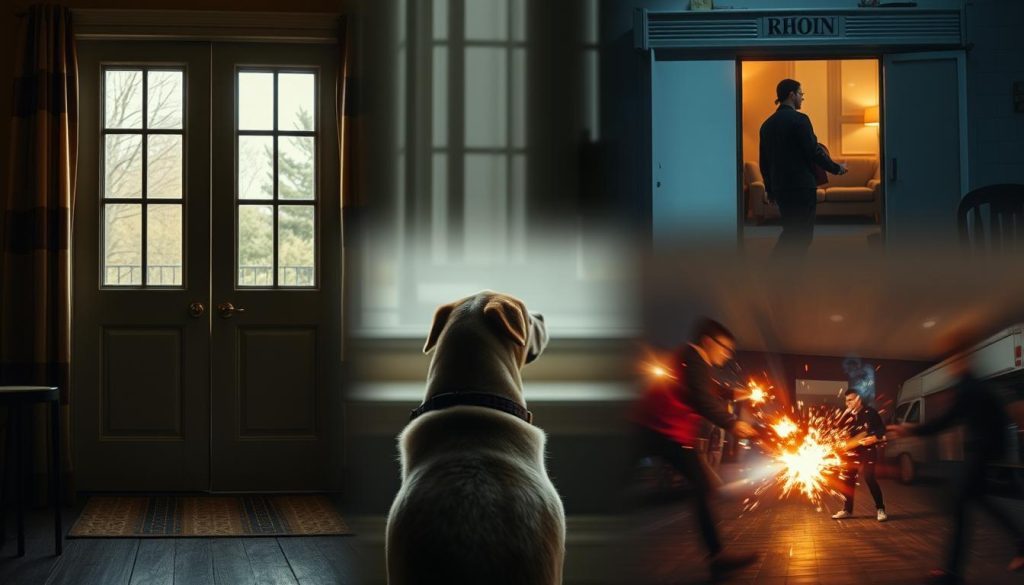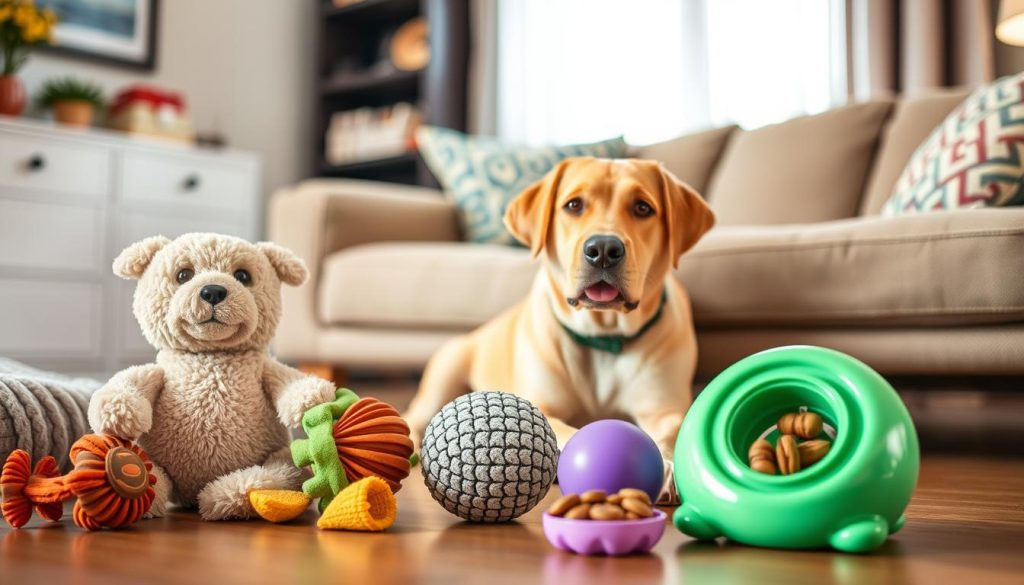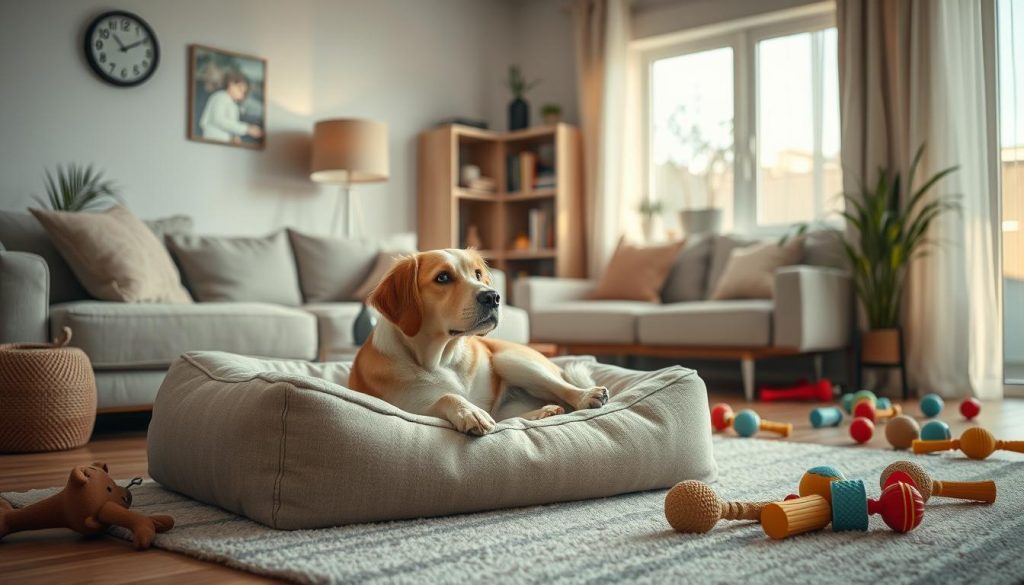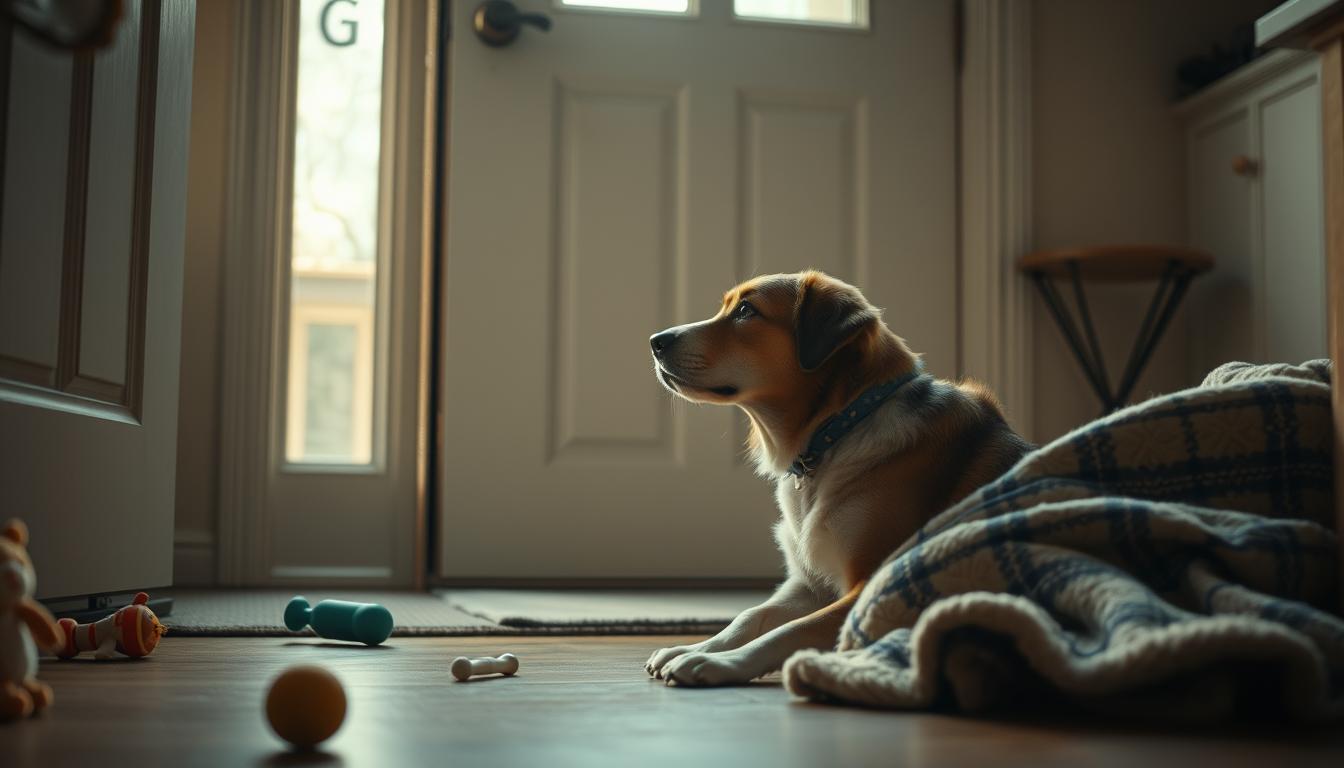Separation anxiety in dogs can be tough for pet owners. But, with the right strategies and patience, you can help your dog feel better when alone. As a devoted dog owner, I’ve found effective ways to manage this issue. I’m excited to share my insights with you.
In this guide, we’ll look at why dogs get separation anxiety and how to help them. We’ll talk about creating a safe space, using gradual desensitization, and when to seek professional help. With these steps, you can help your dog feel confident and happy, even when you’re not there.
Understanding Dog Separation Anxiety
As a dog owner, it’s key to know about what is dog separation anxiety. It’s when a dog gets really upset when left alone. They might bark a lot, chew things they shouldn’t, or even try to get out.
What is Separation Anxiety?
Separation anxiety happens when a dog gets too attached to their owner. When the owner leaves, the dog feels scared and tries to find ways to get their attention back. Knowing why and how to spot it is the first step to helping your dog.
Common Signs of Separation Anxiety
Spotting the symptoms of separation anxiety in dogs is important. Here are some common ones:
- Excessive vocalizations, such as barking, whining, or howling
- Destructive behaviors, like chewing, digging, or scratching at doors and windows
- House soiling, even if the dog is otherwise well-trained
- Attempts to escape, which can lead to injury
- Pacing, panting, or displaying other signs of distress
If you see these symptoms of separation anxiety in dogs when you leave, it’s time to act. You need to find ways to make your dog feel safe and calm.
Dog Separation Anxiety: Causes and Contributing Factors

It’s important to know why dogs get separation anxiety. This helps us find the right ways to help them. Dogs can get anxious for many reasons, like their genes or changes in their life.
Not socializing puppies enough is a big reason for separation anxiety. Puppies that don’t meet many people and animals can get too attached. Changes in the family, like a new member, can also make them anxious.
The age of a dog can also affect their anxiety. Older dogs might get anxious as they get older. Younger dogs might get anxious because they need someone to be with them all the time.
- Genetic predisposition
- Lack of early socialization
- Sudden changes in the household
- Dog’s age and cognitive/physical changes
Knowing why dogs get anxious when left alone helps us help them. We can make them feel safe and happy, even when we’re not there.
Creating a Safe and Secure Environment

Creating a peaceful and secure space is key for dogs with separation anxiety. This means crate training your dog and setting up safe areas. Also, giving calming toys and distractions helps your dog feel safe when alone.
Crate Training and Confinement Areas
Crate training can make a safe, cozy spot for your dog. Start by making the crate a positive place with treats and praise. Choose a special area in your home where your dog can feel safe, like the crate or a cozy corner.
Providing Appropriate Toys and Distractions
Keeping your dog’s mind busy can help with separation anxiety. Give them interactive toys, puzzle feeders, and chew toys. Also, leave familiar scents, like a worn piece of clothing, to comfort them.
Creating a calm space for your dog with separation anxiety is vital. A safe space and engaging toys help build their confidence. This reduces their anxiety when you’re away.
Gradual Desensitization and Counterconditioning

Helping your dog overcome separation anxiety takes time. Two key methods are desensitization and counterconditioning. These techniques help your dog feel better when you leave. They do this by slowly introducing the things that make your dog anxious, like your keys or shoes, and linking them to good things.
Desensitizing Your Dog to Your Departure Cues
Desensitization starts with small steps. Begin by picking up your keys or putting on your shoes, then give your dog a treat or playtime. As you do this more often, make the time you’re away longer. Always make sure your dog stays calm and relaxed.
- Start with short departures, gradually increasing the time you’re away
- Pair departure cues (like picking up keys) with positive reinforcement
- Remain calm and confident during the process to help your dog feel secure
Counterconditioning works by making your dog associate the trigger with something positive. For example, give your dog a puzzle toy or their favorite treat when you put on your shoes. This makes your dog look forward to your departure, not dread it.
Using both desensitization and counterconditioning can really help your dog. It makes them feel more confident and secure when you’re not there.
Seeking Professional Help for Severe Cases
When my dog’s separation anxiety got worse, I knew I needed help. A professional dog trainer or a veterinary behavior specialist was the answer. They create a plan just for my dog’s needs.
Working with a dog trainer helped me understand my dog’s anxiety. They taught me how to help my dog feel better when I’m away. We did exercises together to make my dog more comfortable.
At times, a vet behavior specialist suggested medication or other treatments. Their advice was key in managing my dog’s severe anxiety. With their help, my dog is now more at ease when I leave.

